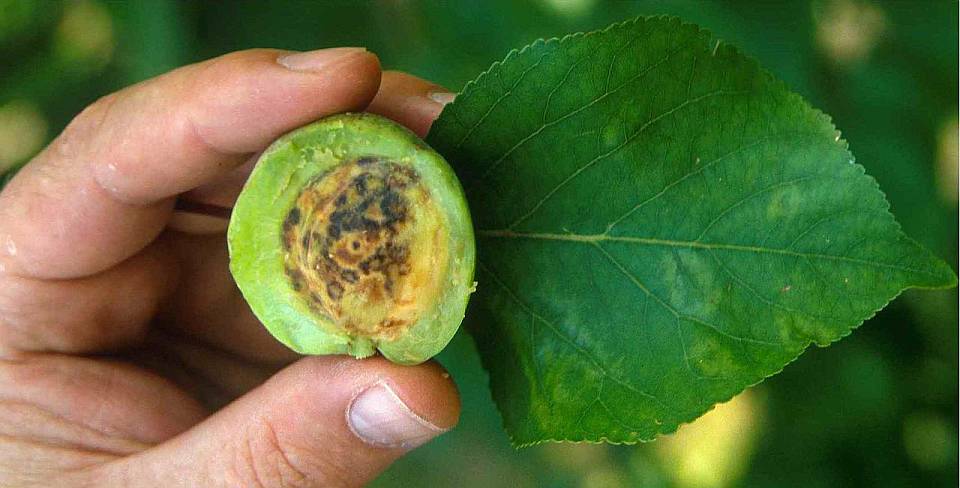USDA Declares Country Free of Plum Pox Virus

What plum pox virus on an apricot looks like. (Photo credit: ARS commons)
At a ceremony today, USDA Under Secretary for Marketing and Regulatory Programs Greg Ibach declared the U.S. free of plum pox virus, signing a proclamation marking the historic announcement.
“Today, our 20-year fight against plum pox disease is officially over,” Ibach said. “Working with our partners, we’ve eliminated this disease and protected the United States’ $6.3 billion stone fruit industry.”
Plum pox is a serious disease of stone fruit such as plums and peaches, as well as nuts such as almonds, which are closely related. No other countries where plum pox disease is known to occur have successfully eradicated the disease. Plum pox does not kill infected trees outright; it causes severe yield losses and greatly reduces the marketability of stone fruit. The virus spreads over short distances by aphids and over long distances via the movement of infected nursery stock or by grafting infected buds onto healthy trees.
The disease was first detected in Pennsylvania in 1999, and later found in Michigan and New York in 2006. From the beginning, the plum pox virus eradication program was a cooperative effort among USDA’s ARS and Animal and Plant Health Inspection Service (APHIS), as well as departments of agriculture in impacted states, the Tuscarora Nation, industry, academia, growers, and homeowners. The program included collecting and testing plant samples, removing diseased and suspect trees, using plum pox virus-tolerant plants, and temporarily banning the planting of susceptible stone fruit varieties.
APHIS and its cooperators eradicated the disease from Pennsylvania and Michigan in 2009 and western New York in 2012, when the ban on planting stone fruit in Niagara County was lifted.
However, because of the serious threat plum pox represented, as recently as 2014 the University of California, Davis Fruit and Nut Research and Information Center held a two-day international meeting, “Understanding and Preparing for the Threat of Plum Pox Virus Spreading to California and the Western States.”
Officials continued to keep a close eye on the disease, and by the end of 2018, they completed three consecutive years of stone fruit field surveys in eastern New York — the last remaining quarantined area in the U.S. —with no further detections, putting eradication in reach.
To ensure the U.S. remains free of plum pox virus, APHIS has put in place a strong safeguarding program that includes ongoing monitoring for the disease in stone fruit producing states, science-based import regulations to prevent the disease’s reentry via imported nursery stock and propagative material, and continued cooperation with Canada to help prevent plum pox virus incursions from that country.









